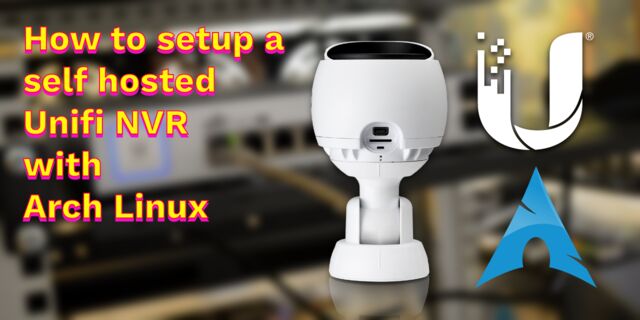Export blender object to simple file format
Update 2015:
The following script generates a C/C++ header that you can include in your project. By default we will include the glad.h (see the glad repository on github) header to make sure we have the openGL defines/functions.
""" Exports the selected object in blender to class with the same name as the selected object. We create a vao and vbo the first time the draw function is called. To use this script: - Copy and paste the contents in to a new blender script - Execute/Run the script with the select object. - Save the header file. """ import bpy import math import mathutils import os import bmesh from mathutils import Vector, Matrix from bpy_extras.io_utils import ExportHelper from bpy.props import StringProperty, BoolProperty, EnumProperty from bpy.types import Operator o = bpy.context.active_object print("="*40) output = [] mat_x90 = mathutils.Matrix.Rotation(-math.pi/2, 4, 'X') conv_mat = o.matrix_world # Build the output list. # -------------------------------------------------- def add_vertex(v, n): v = conv_mat * v v = mat_x90 * v output.append(v.x) output.append(v.y) output.append(v.z) output.append(n.x) output.append(n.y) output.append(n.z) bm = bmesh.new() bm.from_mesh(o.data) bmesh.ops.triangulate(bm, faces=bm.faces) for face in bm.faces: for v in face.verts: add_vertex(v.co, face.normal) bm.free() del bm # -------------------------------------------------- def create_opengl_header(context, filepath): out_floats = [ '%.3f' % elem for elem in output ] out_floats_str = "float vertices[] = {" +",".join(out_floats) +"};" out_header = ("" "#ifndef " +o.name.upper() +"_H\n" "#define " +o.name.upper() +"_H\n" "\n" "#include <glad/glad.h>\n" "\n" "class " +o.name +" {\n" " public: \n" " void draw();\n" "};" "\n" "\n" "/* --------------------------------------------------------------- */\n" "\n" "inline void " +o.name +"::draw() {\n" "\n" " static GLuint vao = 0;\n" " static GLuint vbo = 0;\n" "\n" " int nvertices = " +str(len(output)) +";\n" " " +out_floats_str +"\n" "\n" " if (0 == vao) {\n" " glGenVertexArrays(1, &vao);\n" " glBindVertexArray(vao);\n" " glGenBuffers(1, &vbo);\n" " glBindBuffer(GL_ARRAY_BUFFER, vbo);\n" " glBufferData(GL_ARRAY_BUFFER, nvertices * sizeof(float), vertices, GL_STATIC_DRAW);\n" " glEnableVertexAttribArray(0); /* positions */\n" " glEnableVertexAttribArray(1); /* normals */\n" " glVertexAttribPointer(0, 3, GL_FLOAT, GL_FALSE, sizeof(float) * 6, (GLvoid*)0);\n" " glVertexAttribPointer(1, 3, GL_FLOAT, GL_FALSE, sizeof(float) * 6, (GLvoid*)12);\n" " }\n" "\n" " glBindVertexArray(vao);\n" " glDrawArrays(GL_TRIANGLES, 0, " +str(len(output)) +");\n" "}\n" "\n" "#endif\n" "") f = open(filepath, 'w', encoding='utf-8') f.write(out_header) f.close() return {'FINISHED'} # This snippet is necessary to popup the file save window. # Also adds this operator to the 'space bar menu' class ExportSomeData(Operator, ExportHelper): bl_idname = "export_opengl_header.exp" bl_label = "Export OpenGL Header(ROXLU)" filename_ext = ".h" filter_glob = StringProperty( default="*.h", options={'HIDDEN'}, ) def invoke(self, context, event): self.filepath = o.name +".h" context.window_manager.fileselect_add(self) return {'RUNNING_MODAL'} def execute(self, context): return create_opengl_header(context, self.filepath) def menu_func_export(self, context): self.layout.operator(ExportSomeData.bl_idname, text="Export OpenGL Header") def register(): bpy.utils.register_class(ExportSomeData) bpy.types.INFO_MT_file_export.append(menu_func_export) def unregister(): bpy.utils.unregister_class(ExportSomeData) bpy.types.INFO_MT_file_export.remove(menu_func_export) if __name__ == "__main__": register() bpy.ops.export_opengl_header.exp('INVOKE_DEFAULT')
Scripts from 2012, 2013, 2014:
Tiny script to export a blender object to a OBJ like of file. This format is very simple to parse. I use this sometimes when working on small simulations where I want to have a 3D model.
import bpy import math import mathutils from mathutils import Vector, Matrix o = bpy.context.active_object print("="*40) output = [] mat_x90 = mathutils.Matrix.Rotation(-math.pi/2, 4, 'X') conv_mat = o.matrix_world def add_vert(face_index, n): v = o.data.vertices[face_index].co v = conv_mat * v v = mat_x90 * v output.append("v %f %f %f %f %f %f" % (v.x, v.y, v.z, n.x, n.y, n.z)) def add_face(face, norm): if len(face) == 4: add_vert(face[0], norm) add_vert(face[1], norm) add_vert(face[2], norm) add_vert(face[0], norm) add_vert(face[2], norm) add_vert(face[3], norm) elif len(face) == 3: add_vert(face[0], norm) add_vert(face[1], norm) add_vert(face[2], norm) for face in o.data.polygons: verts = face.vertices[:] n = face.normal add_face(verts, n) out_str = "\n".join(map(str, output))
Another example which lets the user select the destination path of the exported file:
import bpy import math import mathutils from mathutils import Vector, Matrix from bpy_extras.io_utils import ExportHelper from bpy.props import StringProperty, BoolProperty, EnumProperty from bpy.types import Operator # Get the active object, create rotation matrix for Blender > GL, coordinate system o = bpy.context.active_object print("="*40) output = [] mat_x90 = mathutils.Matrix.Rotation(-math.pi/2, 4, 'X') conv_mat = o.matrix_world # Collect all vertices / normals def add_vert(face_index, n): v = o.data.vertices[face_index].co v = conv_mat * v v = mat_x90 * v output.append("v %f %f %f %f %f %f" % (v.x, v.y, v.z, n.x, n.y, n.z)) # Export the given face def add_face(face, norm): if len(face) == 4: add_vert(face[0], norm) add_vert(face[1], norm) add_vert(face[2], norm) add_vert(face[0], norm) add_vert(face[2], norm) add_vert(face[3], norm) elif len(face) == 3: add_vert(face[0], norm) add_vert(face[1], norm) add_vert(face[2], norm) # Called when user selected a file, saved the file def write_some_data(context, filepath): for face in o.data.polygons: verts = face.vertices[:] n = face.normal add_face(verts, n) out_str = "\n".join(map(str, output)) f = open(filepath, 'w', encoding='utf-8') f.write(out_str) f.close() return {'FINISHED'} # This snippet is necessary to popup the file save window. # Also adds this operator to the 'space bar menu' class ExportSomeData(Operator, ExportHelper): bl_idname = "export_simple_obj.exp" bl_label = "Export Simple Object (ROXLU)" filename_ext = ".txt" filter_glob = StringProperty( default="*.txt", options={'HIDDEN'}, ) def execute(self, context): return write_some_data(context, self.filepath) def menu_func_export(self, context): self.layout.operator(ExportSomeData.bl_idname, text="Simple Roxlu exporter") def register(): bpy.utils.register_class(ExportSomeData) bpy.types.INFO_MT_file_export.append(menu_func_export) def unregister(): bpy.utils.unregister_class(ExportSomeData) bpy.types.INFO_MT_file_export.remove(menu_func_export) if __name__ == "__main__": register() bpy.ops.export_simple_obj.exp('INVOKE_DEFAULT')
We transform from the default Blender orientation to the default openGL orientation (z pointing into the screen).
""" Exports the selected object in blender to an float array with vertices and normals. We do not use vertex indices but rather duplicate each triangle. """ import bpy import math import mathutils from mathutils import Vector, Matrix o = bpy.context.active_object print("="*40) output = [] mat_x90 = mathutils.Matrix.Rotation(-math.pi/2, 4, 'X') conv_mat = o.matrix_world def add_vert(face_index, n): v = o.data.vertices[face_index].co v = conv_mat * v v = mat_x90 * v output.append(v.x) output.append(v.y) output.append(v.z) output.append(n.x) output.append(n.y) output.append(n.z) def add_face(face, norm): if len(face) == 4: add_vert(face[0], norm) add_vert(face[1], norm) add_vert(face[2], norm) add_vert(face[0], norm) add_vert(face[2], norm) add_vert(face[3], norm) elif len(face) == 3: add_vert(face[0], norm) add_vert(face[1], norm) add_vert(face[2], norm) for face in o.data.polygons: verts = face.vertices[:] n = face.normal add_face(verts, n) out_str = "int nvertices = " +str(len(output)) +";\n" out_floats = [ '%.3f' % elem for elem in output ] out_str += "float vertices[] = {" +",".join(out_floats) +"};" dest = "path_to_your_header_file/bone.h" f = open(dest, 'w+') f.write(out_str) f.close() print("Created.")
And another updated (May 2017) version which exports the vertices into a .h and .cpp file in the same directory as the .blend file and correctly sets some external variables.
""" Exports the selected object in blender to an float array with vertices and normals. The vertices are rotated into the OpenGL axis system. We do not use vertex indices but rather duplicate each triangle. We create a .h and .cpp file called "Model[ObjectName].h/cpp" and save it into the same location as the .blend file. """ import bpy import math import mathutils from mathutils import Vector, Matrix o = bpy.context.active_object print("="*40) output = [] mat_x90 = mathutils.Matrix.Rotation(-math.pi/2, 4, 'X') conv_mat = o.matrix_world def add_vert(face_index, n): v = o.data.vertices[face_index].co v = conv_mat * v v = mat_x90 * v output.append(v.x) output.append(v.y) output.append(v.z) output.append(n.x) output.append(n.y) output.append(n.z) def add_face(face, norm): if len(face) == 4: add_vert(face[0], norm) add_vert(face[1], norm) add_vert(face[2], norm) add_vert(face[0], norm) add_vert(face[2], norm) add_vert(face[3], norm) elif len(face) == 3: add_vert(face[0], norm) add_vert(face[1], norm) add_vert(face[2], norm) for face in o.data.polygons: verts = face.vertices[:] n = face.normal add_face(verts, n) model_name = o.name; out_header_str = "" \ +"#ifndef MODEL_" +model_name.upper() +"_H\n" \ +"#define MODEL_" +model_name.upper() +"_H\n" \ +"extern int nfloats_" +model_name.lower() +";\n" \ +"extern int nvertices_" +model_name.lower() +";\n" \ +"extern float vertices_" +model_name.lower() +"[];\n" \ +"#endif" out_cpp_str = "" \ +"#include \"Model" +model_name +".h\"\n" \ +"int nfloats_" +model_name.lower() +" = " +str(len(output)) +";\n" \ +"int nvertices_" +model_name.lower() +" = " +str((int(len(output) / 6))) +";\n" out_cpp_floats = [ '%.3f' % elem for elem in output ] out_cpp_str += "float vertices_" +model_name.lower() +"[] = {" +",".join(out_cpp_floats) +"};" header_filepath = bpy.path.abspath("//") +"Model" +model_name +".h" cpp_filepath = bpy.path.abspath("//") +"Model" +model_name +".cpp" f = open(cpp_filepath, 'w+') f.write(out_cpp_str) f.close() f = open(header_filepath, "w+") f.write(out_header_str) f.close() print("Created.")

 NAT Types
NAT Types
 Building Cabinets
Building Cabinets
 Compiling GStreamer from source on Windows
Compiling GStreamer from source on Windows
 Debugging CMake Issues
Debugging CMake Issues
 Dual Boot Arch Linux and Windows 10
Dual Boot Arch Linux and Windows 10
 Mindset Updated Edition, Carol S. Dweck (Book Notes)
Mindset Updated Edition, Carol S. Dweck (Book Notes)
 How to setup a self-hosted Unifi NVR with Arch Linux
How to setup a self-hosted Unifi NVR with Arch Linux
 Blender 2.8 How to use Transparent Textures
Blender 2.8 How to use Transparent Textures
 Compiling FFmpeg with X264 on Windows 10 using MSVC
Compiling FFmpeg with X264 on Windows 10 using MSVC
 Blender 2.8 OpenGL Buffer Exporter
Blender 2.8 OpenGL Buffer Exporter
 Blender 2.8 Baking lightmaps
Blender 2.8 Baking lightmaps
 Blender 2.8 Tips and Tricks
Blender 2.8 Tips and Tricks
 Setting up a Bluetooth Headset on Arch Linux
Setting up a Bluetooth Headset on Arch Linux
 Compiling x264 on Windows with MSVC
Compiling x264 on Windows with MSVC
 C/C++ Snippets
C/C++ Snippets
 Reading Chunks from a Buffer
Reading Chunks from a Buffer
 Handy Bash Commands
Handy Bash Commands
 Building a zero copy parser
Building a zero copy parser
 Kalman Filter
Kalman Filter
 Saving pixel data using libpng
Saving pixel data using libpng
 Compile Apache, PHP and MySQL on Mac 10.10
Compile Apache, PHP and MySQL on Mac 10.10
 Fast Pixel Transfers with Pixel Buffer Objects
Fast Pixel Transfers with Pixel Buffer Objects
 High Resolution Timer function in C/C++
High Resolution Timer function in C/C++
 Rendering text with Pango, Cairo and Freetype
Rendering text with Pango, Cairo and Freetype
 Fast OpenGL blur shader
Fast OpenGL blur shader
 Spherical Environment Mapping with OpenGL
Spherical Environment Mapping with OpenGL
 Using OpenSSL with memory BIOs
Using OpenSSL with memory BIOs
 Attributeless Vertex Shader with OpenGL
Attributeless Vertex Shader with OpenGL
 Circular Image Selector
Circular Image Selector
 Decoding H264 and YUV420P playback
Decoding H264 and YUV420P playback
 Fast Fourier Transform
Fast Fourier Transform
 OpenGL Rim Shader
OpenGL Rim Shader
 Rendering The Depth Buffer
Rendering The Depth Buffer
 Delaunay Triangulation
Delaunay Triangulation
 RapidXML
RapidXML
 Git Snippets
Git Snippets
 Basic Shading With OpenGL
Basic Shading With OpenGL
 Open Source Libraries For Creative Coding
Open Source Libraries For Creative Coding
 Bouncing particle effect
Bouncing particle effect
 OpenGL Instanced Rendering
OpenGL Instanced Rendering
 Mapping a texture on a disc
Mapping a texture on a disc
 Download HTML page using CURL
Download HTML page using CURL
 Height Field Simulation on GPU
Height Field Simulation on GPU
 OpenCV
OpenCV
 Some notes on OpenGL
Some notes on OpenGL
 Math
Math
 Gists to remember
Gists to remember
 Reverse SSH
Reverse SSH
 Working Set
Working Set
 Consumer + Producer model with libuv
Consumer + Producer model with libuv
 Parsing binary data
Parsing binary data
 C++ file operation snippets
C++ file operation snippets
 Importance of blur with image gradients
Importance of blur with image gradients
 Real-time oil painting with openGL
Real-time oil painting with openGL
 x264 encoder
x264 encoder
 Generative helix with openGL
Generative helix with openGL
 Mini test with vector field
Mini test with vector field
 Protractor gesture recognizer
Protractor gesture recognizer
 Hair simulation
Hair simulation
 Some glitch screenshots
Some glitch screenshots
 Working on video installation
Working on video installation
 Generative meshes
Generative meshes
 Converting video/audio using avconv
Converting video/audio using avconv
 Auto start terminal app on mac
Auto start terminal app on mac
 Export blender object to simple file format
Export blender object to simple file format